Chris Grinter, liepos 1 d, 2010 O dabar dar retai pasikartoja serijos, Žmonių balsas! Tiems, kurie neturi randai aukštųjų mokyklų prisiminimų Lotynų klasės (ne dėl mano mokytojo kaltės) Aš tave pagreitinti – pavadinimas išsiverčia į “žmonių balsas”. Čia yra dar vienas senas elektroninio pašto, kad aš taupymo. Jis yra 100% real message, but of course I have redacted the real names and addresses to protect the innocent. Enjoy! I also highly encourage submissions of your own-
Winter 2008:
“Sveiki, I’m so glad I found you. Now, I hope you can help me. 1982, while camping at an old gold mining camp in the Mendocino National Forest I was bitten by a large brown spider. It took three days for the venom to pass through my system. On day three I was 95% blind, the bite swelled to a large grotesquely deep red bump on my arm. I’ll never forget the 12 hours the venom attacked me. The price I payed to survive this spiders venom was…….to loose absolutely all my body fat. I spoke with a doctor from Santa Rosa by phone from a friends place in (some small CA town). He knew about this spider and couldn’t believe I suvived the venom when I told him I lost all my body fat. He also told me it was impossible for someone to survive loosing all their body fat in 12 valandos. I reminded him that this was an impossible situation. He told me that this spider is being kept from the public. I believe this spider came from China or Russia. These spiders don’t share anything with other Cali spiders. They have big bodies and short stout legs. The female that bit me was about 4 inch’s and, had 5 males. Four years later, while living in the Hayward hills, I couldn’t believe my eyes, running across the floor, another one. This spider was about 6 inch’s. I know these spiders don’t climb walls or spin webs. They build nest’s, and obtain 4-5 males to protect her and find food. The female never leave’s the nest except…………when a larger female drives her out and, kills her males. This is when people are bitten by this spider, as she runs around looking for another nest. Bites are very uncommon. I wondered………….how big was the female that drove that 6 inch from her nest. Ir………….how big do they get. Can I find this spider on display at (your museum)? Is it possible to find all the information their is on this very dangerous spider?”
Continue reading Vox Populi, II tomas
Chris Grinter, on June 26th, 2010 Welcome to volume eight of the inconsistently reoccurring series, Genijus spaudos. Aš atėjau visoje Šis straipsnis recently regarding an endemic Puerto Rican butterfly. Who can tell me exactly why this report is misleading? It may be a little trickier than the standard GOP (I suggest discarding any previously associated acronyms with those letters). Hint, just telling me the butterfly in the picture is from Malaysia is not the answer I’m looking for!
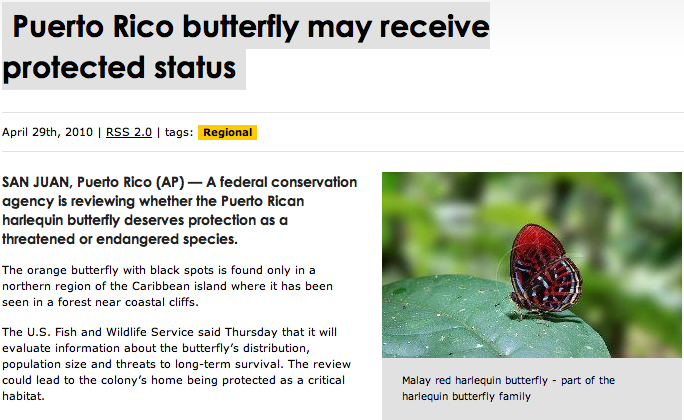
Chris Grinter, on June 23rd, 2010 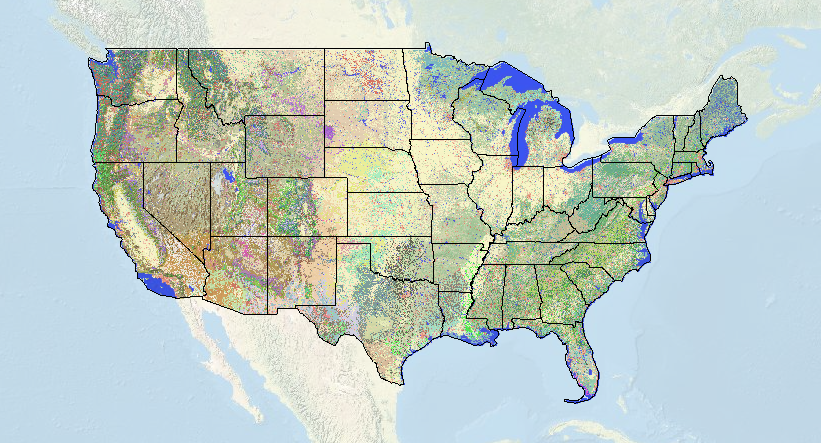
I’ve always wondered how to find the correct terminology for land cover in a given area. Usually, I just ballpark something along the lines of “oak chaparral”. But now I can use this awesome new map brought to us by the USGS/National Biological Information Infrastructure. The level of detail is amazing, and you can specify the degree of accuracy with a drop down tab (1-3). Now with a high-def US topo map I can see exactly where the largest stands of monterrey pine are (actually it’s a California Coastal Closed-Cone Conifer Forest and Woodland) so I can optimally place my trap this weekend.
Continue reading Landscape Cover Map
Chris Grinter, nuo 18 birželis, 2010 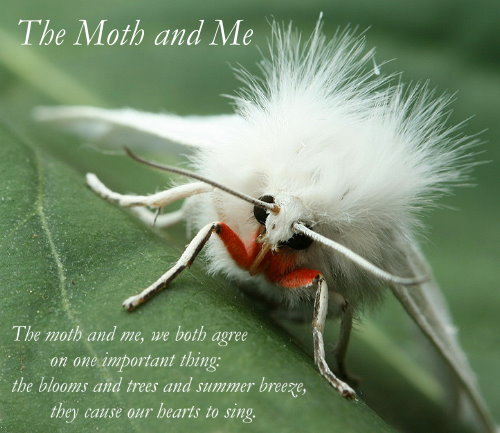
Sveiki atvykę į kandis ir mane #12, ir mano pirmasis dienoraštis karnavalas. Nepaisant dienoraščių keletą mėnesių aš dar pažvelgti atgal ir apmąstyti, kaip tiksliai tapau Dellamorte su Lepidoptera į pirmąją vietą. Prisimindamas laiką ar vietą, kur tai įvyko neįmanoma, ir, kaip ir daugelis mano kolegų ir aš tikiu, kad daugelis mano skaitytojų, Turėjau drugelis tinklą ir “Re narvas” ranka, kai tik galėjau vaikščioti. Kai jis ateina į entomologijos Manau beveik visi įsimyli iš pirmo su dideliu ir ryškus vabzdžių. Man tai buvo drugelis, natūraliai. Aš atsimenu, spoksoti begalinis valandas nuo Ornithoptera ir Papilio įvairovės pavaizduotu Paulius Smart s garsi knyga. Kažkur palei siekti kažko naujo, kaip aš pradėjau nuklysti į naktinių pasaulyje. Kandys sudaro apie Lepidoptera įvairovės dauguma; nors yra beveik 11,000 rūšys, JAV, tik keli šimtai yra drugeliai. Tai greitai atidarė duris (gal į bedugnę…) į šokiruojantis gausa visur aplink mus. Tai nuostabi įvairovė jau parengtas man giliai į biologijos ir evoliucijos istorijos Lepidoptera. Redagavimas šiuos keturiolika įmokas kandžių dienoraščių kartu aš tiesiog negali padėti, bet atspindi atgal, kai mano paties mothing kelionę.

Perhaps jei buvau Europoje vaikui tai kandžių (Deilephila elpenor porcellus) būtų buvę pirmas sugauti mano akis. Per ne Miesto kandys Ronas Laughton atrado stulbinantį įvairovę savo kieme daug tokiu pačiu būdu, kaip aš augau čia JAV. Pažvelkite į spąstus tipų jis buvo, naudojant išvaizdą, kurių dauguma jis pastatytas save. Vienas iš geriausių elgesys drugių yra jų noras pasinerti stačia galva į šviesą. Ne per toli nuo Ron, mike Beale buvo dienoraščių Britų kandys taip pat. Jis gali būti labai nuostabi, kiek panašus mūsų du fauna yra (keletas kandys iš tikrųjų yra Tas pats).
Continue reading The Moth and Me #12
Chris Grinter, on June 11th, 2010 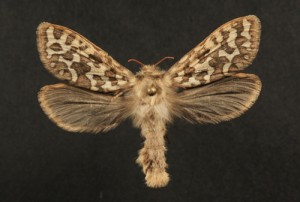
Ši kandis yra tokia pat reta, kaip ir jos paranormalus bendravardis (išskyrus tai, kad tai tikra) – tai Gazoryctra sp. Hepialidae šeimoje. Jie atstovauja bazinei Lepidoptera giminei ir yra plačiai žinomi kaip kandžiai vaiduokliai arba greitieji drugiai.. Vaiduoklis – nes žinoma, kad kai kurių rūšių patinai skraido tikromis lekomis, kur jie svyruoja aukštyn ir žemyn žolingose proskynose sutemus, o patelės stebi. Tie patys patinai taip pat kviečia pateles su feromonais, šiek tiek atsilikusi situacija su vabzdžiais. Swift- gana savaime aišku, tačiau žinoma, kad borealinės rūšys yra galingos skrajutės.
Viena iš ypatybių, padedančių tai nurodyti kaip bazinę liniją, yra sparnų išdėstymas ant kūno, kažkokia sparno venacija, sumažėjusios burnos dalys arba jų nėra ir stipraus sparnų sukabinimo įtaiso nebuvimas. Šios kandys turi a “jungas”, kuris yra mažas nykštis kaip projekcija iš užpakalinio sparno viršaus. Kitos kandžių linijos turi tvirtą sujungimo mechanizmą, žinomą kaip frenulum ir retinaculum, kur šeriai sukabina du sparnus, kad jie liktų sujungti skrydžio metu. Ramybės metu dantenas susilanksto ir tikriausiai padeda išlaikyti sparnus kartu – bet ne skrydžio metu; priekinis sparnas nesutampa su užpakaliniu sparnu ir skrydis nėra dinamiškas (Scoble 1992).
Amerikoje Hepialid biologija yra labai menkai suprantama. Pasauliniu mastu aprašyta tik keletas gyvenimo istorijų – visos jos atrodo endofaginės (nuobodu) augalų šaknų sistemose. Kai kurios ankstyvos stadijos lervos gali maitintis lapų pakratai arba po žeme šaknų sistemoje prieš patekdamos į šakniastiebį.. Australijai pasisekė, kad ji turi įvairią ir įspūdingą Hepialidae fauną – daugelis yra nuostabios spalvos ir milžiniškas (250mm arba iki 12 colių!), ir šiek tiek geriau studijavo. Kai kurios lervos yra net pakankamai paplitusios, kad aborigenų gentys jas naudojo kaip pagrindinį maisto šaltinį.
Bet ypač grįžkime prie šio drugio. Surinkau jį į savo juodos šviesos spąstus praėjusį rugpjūtį Siera Nevadoje 10,500 pėdos. Rūšis nežinoma, ir tikriausiai gali būti naujas. Labiausiai apmaudu yra tai, kad tai vienintelis mokslui žinomas egzempliorius. Visa gentis yra labai reta, išskyrus vieną ar dvi įprastas rūšis, yra tik kelios dešimtys egzempliorių. Taip pat ir rūšies patelė, aprašyta tik iš patino? Keista kitaip žinomos rūšies aberacija? O gal tai tikrai nauja. Aš užkodavau DNR brūkšniniu kodu, tai iš tikrųjų man nieko nesako, nes nėra jokių artimai susijusių rūšių sekų. Tiesą sakant,, kiek aš žinau, kitos rūšys Sjeroje net nebuvo renkamos dešimtmečius, todėl aš net negaliu gauti sekos iš senesnio egzemplioriaus. Vyšna ant torto – jų elgesys. Jie retai, jei kada nors, Ateik į šviesą – kuris gali būti jų krepusinio skrydžio rezultatas. Tinkamą naktį jie gali būti ant sparno 20-30 minučių, dažniausiai moteris ieško vyro, arba į kiaušialąstę skrendanti patelė (greičiausiai tiesiog transliuoja, kad jų kiaušiniai išsklaidytų ant žemės). Taigi rugpjūčio pabaigoje grįšiu į aukštąją Sjerą su keletu entomologijos skyriaus savanorių, tikėdamasis, kad ant stačių šlaitų pamatysiu vieną šnypštuką.. Jei gausiu daugiau, tai gali pasirodyti įspūdinga nauja Kalifornijos rūšis.
Chris Grinter, on June 11th, 2010 Kas gali pamatyti, kas negerai Šis straipsnis?

Chris Grinter, on June 9th, 2010 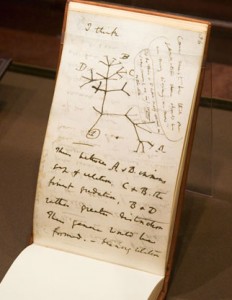
Tai recent article in the American Naturalist has taken a second look at some of the famously inflated species estimates, some going high as 100 million (Erwin, 1988). Estimates conducted by the authors indicate that projections above 30 million have probabilities of <0.00001. Their estimated range is more likely to be between 2.5 ir 3.7 million species (with 90% confidence). This seems somewhat reasonable given that these extraordinary estimates were based heavily on extrapolation. There are clearly many difficulties in assessing diversity based on tropical arthropod surveys – this paper again uses phytophagous (plant-eating) beetles for estimates. They are careful to point out that these methods do not account for non-phytophagous insects, but assume that they will follow traditional biogeographic patterns of diversity. This is somewhat of a new concept given that when I was in college I was taught that parasitoids are counterintuitively not more diverse in tropical regions. This hypothesis is more often than not being proven false in the light of more precise modern taxonomic methodology. Rather proudly I helped play a role with the parasitoid project at the UIUC. Trumpai tariant, host specificity is more extreme in tropical environments with hundreds of cryptic species hidden amongst rapidly radiating groups such as the microgastrine Braconids (Himenoptera) – the same has held true across similar taxa.
One interesting note about the paper is their inclusion of a secondary estimation based on Lepidoptera canopy assemblages. They assumed that a) all Lepidoptera can be found in the canopy and b) that all leps are phytophagous. This is clearly a very conservative estimation given that not all Lepidoptera are found in the canopy and not all are phytophagous. While I do not have the numbers on hand, a certain percentage of lep diversity must have been excluded from these estimates. I will also go out on a limb and assume that the authors (Novotny 2002) did not include microlepidoptera morphospecies – and most likely estimated abundances with our current taxonomic understanding. However I do not have access to this 2002 paper, so I may be incorrect. Using these Lepidoptera numbers (from the same survey as the Coleoptera) a global diversity was estimated by Hamilton et. al. at around 8.5 millions arthropod species.
While I agree that extraordinary estimates of tens of tens (or hundreds) of millions of arthropod species are probably ridiculous; I am of the camp that current research is indicating that estimates of the lower tens of millions of species are possible. The authors have failed to include research that counterbalances their premise that tropical species exhibit a lower beta diversity (Novotny 2002, 2007). In the same journal, Nature 2007, Dyar et. al. have indicated that the American tropics exhibit a higher beta diversity than previously assumed. Either it can be said that estimates of beta diversity in the australasian tropics are incorrect, or they are incompatible with species assemblages of neotropical forests. All of this speaks to the difficulty in extrapolating estimations of species across all tropical regions. These estimates are based on comprehensive insect surveys of New Guinea, perhaps they do not accurately reflect the true diversity of American tropical forests, and these number ranges are low.
As a final thought, most assesments are focused on tropical arthropods. It seems all too possible that the total number of all species, including bacteria and archaea, can easily exceed tens of millions. But extrapolating those numbers is even more precarious than arthropods, given the extreme lack of knowledge we have.
Chris Grinter, on June 4th, 2010 
Can’t find a way to link the direct video (not even VodPod), but here is the link to the Daily Show site. How many physicists pulled their hair out when they heard this one? Yikes, he is the newly appointed spokesman. Don’t worry Neil, you’re not going anywhere after this.
Having not aired yet I can’t tell exactly how apologetic the show is, but it seems heavily focused on finding the “creator”. I can hear it in John Stewart’s voice when he pulls back from ripping into Freeman’s “god of the gaps” theory. Perhaps there was an edit and we missed the question where John Stewart asked “Morgan, can you define a logical fallacy for us… perhaps the god of the gaps one?” I believe that any physicist who ever says “god was responsible” says it with no deeper meaning than when Einstein famously evoked god’s dice. That’s to say, a non-literal and non-personal god found only in the beauty and splendor of nature.
Chris Grinter, on June 2nd, 2010 
If there is one thing that I learned in college, it was how to easily distract myself. I tend to keep my TV on in the background while I’m working on my computer, especially late at night when I am usually fighting a winning war against sleep. The other night something did catch my eye: a man holding dowsing rods in his back yard. Volume up, let the bullshit flow. It was just a flash of idiocy in an otherwise good program on home improvement. I’ve become accustom to crap-based TV on networks such as the History Channel or a Discovery network (quality of their shows include gems like “The Haunted: ghosts and pets”), but I was a little surprised to see BS grace my local PBS station.
Over on the “American Woodshop” host Scott Phillips was constructing a beautiful garden arbor. You can watch the entire thing here for free: Episode 1609: Period Architectural Moldings and Trim. There are no time stamps on the clip, but the dowsing comes in around the mid-point. While demonstrating the materials needed to secure the wood to the ground he cautioned against digging haphazardly into your yard without knowing where the underground water, electrical or gas lines were: solid advice. So in order to do this you should (paraphrased) “take pieces of coat-hanger, anything will do, turn them into an “L”. As I walk forward the bars cross – ten (they cross) – right there is the irrigation line. 9 out of 10 people have this ability, but you should call in a professional if there is any doubt“. My translation “OK guys, don’t worry about calling in some guy to do this, figure it out this way”. Please tell me what man who seriously watches a home improvement show at midnight would cede authority to someone else before giving it the good ol’ college try? Even if we grant for a moment that 9 out of 10 people could do this, what about that one guy who can’t? Isn’t it irresponsible to suggest that you can avoid power/water/sewer/gas only 90% of the time? Oops, hit that pesky gas line…
Being a scientist, a skeptic and a procrastinator – I wrote Scott a message about this so I could avoid my work at hand. Today he kindly replied saying: (excerpt)
“Our bodies are electromagnetic fields. Disrupt a field and things happen…. I learned the technique mentioned from a city worker that they used to find lines. Not from a charlatan. My team witnessed the objective use of this technique.”
Briefly, no, our bodies are not electromagnets. Everyone can hold a compass, or TV… without screwing them up. Franz Mesmer coined the idea of “Animal Magnetism” in the last half of the 18th century (also invented “mesmerization” AKA hypnotism) – and had it abruptly debunked by Benjamin Franklin and others. I’m also a bit worried to hear that city workers are relying on dowsing to locate public lines! But to move onward, let us dig into the myths of dowsing. I agree that there seems to be somewhat of an intuitive truth when it comes to dowsing, however false it is scientifically, it remains compelling. Žinoma… electrical things underground effect sensitive wires above. And wow, look at all these guys who can find water, or power, arba… lost people… arba bombs? Gerai, let’s stick to water for this conversation.
(continued)
Continue reading An Uphill Battle
Chris Grinter, birželio 1 d, 2010 Just a few images of common California leps, taken along the coast range near Santa Cruz a few weeks ago. Starting to work my way through some photo backlog…

Euphydryas chalcedona
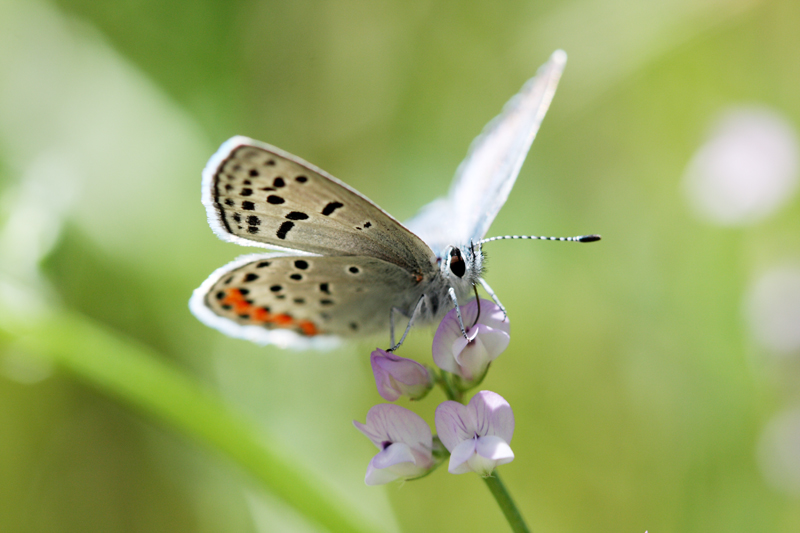
Plebejuszowski ACMO
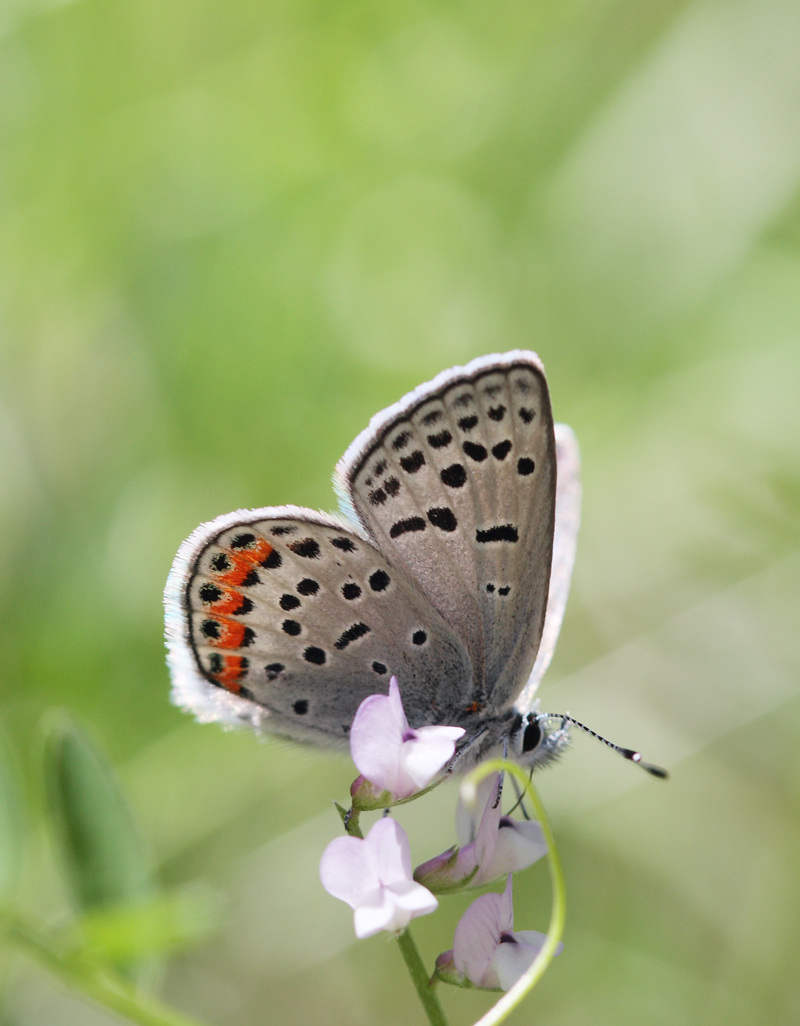
Plebejuszowski ACMO

Ethmia arctostaphylella apie Eriodictyon sp.
One interesting note on Ethmia arctostaphylella – the name is a misnomer, it does not actually feed on Arctostaphylos (Manzanita). At the time of description in 1880 Walsingham had found larvae pupating on leaves of manzinata and assumed it was their host plant. In Jerry Powell’s stunning monograph of the group he indicates this moth was reared from Eriodictyon – which happens to be the flower the moth is perched on. The two plants grow side by side, and it’s pretty easy to see how a wandering caterpillar finds its way onto a neighbor.
|
Skepticizmas
|













